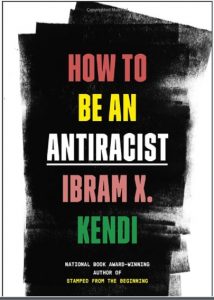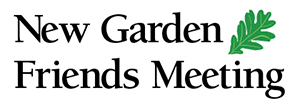 “How to be an Anti-Racist” by Ibram X. Kendi continues on Zoom. All are invited to join in the discussion of Kendi’s popular book on antiracism. Even if you have not read the book, the queries we will discuss will be pertinent. This is a part of our work in becoming an antiracist meeting. Our next Zoom discussion will be Thursday, May 20 from 7 – 8 p.m. To receive a Zoom invitation, contact Patricia Gutzwiller at ([email protected]). For those who want to follow in the book, we will be discussing Chapter 6 – “Body”. The queries we will be discussing come from the companion book/journal, “Be Anti-Racist”, also by Kendi.
“How to be an Anti-Racist” by Ibram X. Kendi continues on Zoom. All are invited to join in the discussion of Kendi’s popular book on antiracism. Even if you have not read the book, the queries we will discuss will be pertinent. This is a part of our work in becoming an antiracist meeting. Our next Zoom discussion will be Thursday, May 20 from 7 – 8 p.m. To receive a Zoom invitation, contact Patricia Gutzwiller at ([email protected]). For those who want to follow in the book, we will be discussing Chapter 6 – “Body”. The queries we will be discussing come from the companion book/journal, “Be Anti-Racist”, also by Kendi.
Both books can be purchased at Scuppernong. Here are the queries we will be discussing:
- Describe a moment in your life when the presence of an unknown Black or Brown body scared you. Explain why you were so fearful and why you should not have been so fearful.
- Why are Black and Brown people afraid of scaring others when they go outside?
- Describe a time when you were in a familiar or an unfamiliar Black or Brown space and worried that something would happen to you—and nothing did happen to you. Was the space the problem or were your ideas about the space the problem? Explain.
- Recall a recent racial injustice you witnessed. Racial profiling? Police violence? Racial slur? Did you say something or do something? Why or why not?
- Recall a recent racial injustice in society that affected you – made you sad or angry or prompted you to take action. Why did this racial injustice effect you so deeply?
- Do you believe Black neighborhoods are dangerous? What makes you believe or disbelieve this idea?
The harmful idea of the “dangerous Black neighborhood”
a) List two ways this dangerous idea affect housing policy, housing values, or housing decisions.
b) List two ways this dangerous idea affects educational policy, school values, or educational decisions.
c) List two ways this dangerous idea affects business policy, business values, or business decisions.
d) List two ways this dangerous idea affects policing policy, police fears, or policing decisions.
e) List two examples of when this dangerous idea affected your own decisions. - Upper income Black neighborhoods have lower levels of violence than lower-income Black neighborhoods – as is the case among every race. Dangerous Black neighborhoods are actually dangerous unemployed neighborhoods. What does this mean? What bearing would this more accurate framing have on anticrime policy?
- How can we go about disconnecting Blackness from criminality?
- Why is it harmful to consider one racial group to be dangerous and other racial groups to be safe? How can that racist idea open us all up to personal harm?
- Describe an instance in your life when you mistook someone as safe, due to their racial identity, and the person turned out to be dangerous or harmful.

